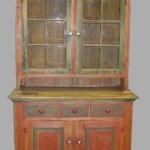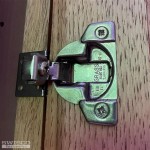How To Clean Brass Handles On Kitchen Cabinets
Brass handles on kitchen cabinets, while adding a touch of elegance and sophistication, are prone to tarnishing and accumulating grime over time. Regular cleaning is essential to maintain their luster and prevent permanent damage. The process of cleaning brass handles involves understanding the type of brass, selecting appropriate cleaning methods, and employing protective measures to extend the lifespan of the finish. This article provides a comprehensive guide on how to effectively clean brass handles on kitchen cabinets.
Before embarking on any cleaning procedure, it is crucial to identify whether the brass handles are solid brass or brass-plated. Solid brass consists entirely of brass alloy, while brass-plated items have a base metal coated with a thin layer of brass. Determining the composition is vital as different cleaning agents and techniques are suitable for each type. A simple test involves using a magnet. Solid brass is non-magnetic, whereas a brass-plated item will attract a magnet due to the presence of a base metal like steel or iron. Alternatively, examining areas where the finish might be worn, such as edges or corners, can reveal the underlying metal if it is brass-plated.
Once the composition of the handles is determined, appropriate cleaning supplies can be gathered. For both solid brass and brass-plated handles, a gentle approach is recommended initially. Harsh chemicals and abrasive cleaners can strip the finish or damage the underlying metal, particularly in the case of brass-plated items. Essential cleaning supplies include:
- Warm water
- Mild dish soap
- Soft cloths or sponges
- A soft-bristled brush (such as an old toothbrush)
- Optional: Baking soda, white vinegar, lemon juice, brass cleaner
The environment should be considered when cleaning. Place towels or newspapers beneath the cabinets to protect the countertop and floor from spills and cleaning solutions. Good ventilation is also important, especially when using chemical cleaners. Open windows or turn on a kitchen fan to ensure adequate airflow.
Initial Cleaning with Soap and Water
The first step in cleaning brass handles, regardless of whether they are solid brass or brass-plated, involves a gentle wash with warm water and mild dish soap. This initial cleaning aims to remove surface dirt, grease, and grime that may have accumulated over time. Mix a few drops of dish soap into a bowl of warm water. Dip a soft cloth or sponge into the soapy water and gently wipe down the brass handles. Pay close attention to areas that tend to accumulate more dirt, such as crevices and around the edges.
For areas with stubborn dirt or grime, use a soft-bristled brush, such as an old toothbrush, to gently scrub the surface. This will help to loosen the dirt without scratching the brass. Avoid using excessive force, especially on brass-plated handles, as the thin layer of brass can be easily damaged. Rinse the handles thoroughly with clean water to remove any soap residue. Use a clean, dry cloth to dry the handles completely. Moisture left on the surface can contribute to tarnishing.
If the handles are only lightly tarnished or dirty, this initial cleaning with soap and water may be sufficient to restore their luster. However, if the handles are heavily tarnished or stained, further cleaning may be necessary. Before proceeding with more aggressive cleaning methods, it is essential to test any cleaning solution on an inconspicuous area of the handle to ensure that it does not damage the finish.
Addressing Tarnishing with Natural Cleaning Agents
For tarnished brass handles, natural cleaning agents like baking soda, white vinegar, and lemon juice can be effective and less harsh than commercial brass cleaners. These ingredients contain mild acids that can help to dissolve tarnish without damaging the brass. However, it is still crucial to exercise caution and test the cleaning solution on an inconspicuous area before applying it to the entire handle.
Baking Soda Paste: Baking soda is a mild abrasive that can help to remove tarnish from brass. To create a baking soda paste, mix baking soda with a small amount of water to form a thick paste. Apply the paste to the tarnished areas of the brass handles and gently rub with a soft cloth or sponge. For stubborn tarnish, allow the paste to sit on the surface for a few minutes before rubbing. Rinse the handles thoroughly with clean water and dry with a clean, dry cloth.
White Vinegar Solution: White vinegar is an acidic cleaner that can help to dissolve tarnish and grime. To create a white vinegar solution, mix equal parts white vinegar and water in a bowl. Dip a soft cloth or sponge into the vinegar solution and gently wipe down the brass handles. For heavily tarnished areas, soak the handles in the vinegar solution for a few minutes before wiping. Rinse the handles thoroughly with clean water and dry with a clean, dry cloth. The acidity of the vinegar can be increased for more stubborn stains, but it should be used with more caution and tested beforehand to prevent damage.
Lemon Juice and Salt: Lemon juice contains citric acid, which can also help to remove tarnish from brass. Mix lemon juice with a small amount of salt to create a paste. The salt acts as a mild abrasive, helping to scrub away the tarnish. Apply the paste to the tarnished areas of the brass handles and gently rub with a soft cloth or sponge. Rinse the handles thoroughly with clean water and dry with a clean, dry cloth. Lemon juice can also be applied directly to the handles and left for a little while before being scrubbed with salt.
After using any of these natural cleaning agents, it is important to rinse the handles thoroughly with clean water to remove any residue. Leftover residue can attract dirt and contribute to further tarnishing. Dry the handles immediately after rinsing to prevent water spots.
Using Commercial Brass Cleaners
If natural cleaning agents are not effective in removing the tarnish, a commercial brass cleaner may be necessary. However, it is crucial to select a brass cleaner that is specifically designed for the type of brass you are cleaning (solid brass or brass-plated). Follow the manufacturer's instructions carefully, as improper use of commercial brass cleaners can damage the finish. Always test the cleaner on an inconspicuous area of the handle before applying it to the entire surface.
Commercial brass cleaners typically contain chemicals that can effectively dissolve tarnish and restore the luster of brass. However, these chemicals can also be harsh and abrasive, so it is important to use them sparingly and with caution. Wear gloves to protect your hands from the chemicals, and work in a well-ventilated area to avoid inhaling fumes.
Apply the brass cleaner to a soft cloth and gently rub it onto the tarnished areas of the brass handles. Follow the manufacturer's instructions regarding the amount of time to leave the cleaner on the surface. Avoid using excessive force or abrasive scrubbing, as this can damage the finish. Rinse the handles thoroughly with clean water to remove any cleaner residue. Use a clean, dry cloth to buff the handles to a shine.
Some commercial brass cleaners may leave a protective coating on the brass handles, which can help to prevent future tarnishing. However, it is still important to regularly clean the handles to remove dirt and grime and maintain their luster. Overuse of commercial brass cleaners can lead to a build-up of chemicals on the surface of the handles, which can dull the finish over time.
After cleaning, consider applying a brass polish or sealant to protect the handles from future tarnishing. These products create a barrier between the brass and the air, slowing down the oxidation process that causes tarnishing. Follow the manufacturer's instructions carefully when applying these products.
Preventative measures can significantly reduce the frequency of cleaning required for brass kitchen cabinet handles. Regular dusting with a soft cloth can remove surface dirt and grime before it has a chance to accumulate. Avoid touching the handles with greasy or dirty hands, as this can accelerate tarnishing. Consider applying a protective coating to the handles to prevent tarnishing. This coating can be a commercial brass sealant or a simple layer of wax. The key is to regularly maintain the cleanliness to avoid the need for harsh chemicals or extensive cleaning routines.

How To Clean Kitchen Cabinet Hardware And Knobs

How To Re Hardware In 5 Minutes With 1

How To Easily Clean All Brass Silver Copper Metal Furniture Hardware Polishing

How To Clean And Polish Brass Kitchen Handles

Brass Hardware Easy Tricks To Remove Paint Tarnish The Homes I Have Made

How To Clean Kitchen Cabinet Hardware And Knobs

How To Properly Clean Brass At Home

How To Clean Brass Hardware Three Coats Of Charm

Cleaning Brass How To Clean Fixtures Bar Keepers Friend

How To Clean And Maintain Your Brass Handles Cobe Hardware
Related Posts








